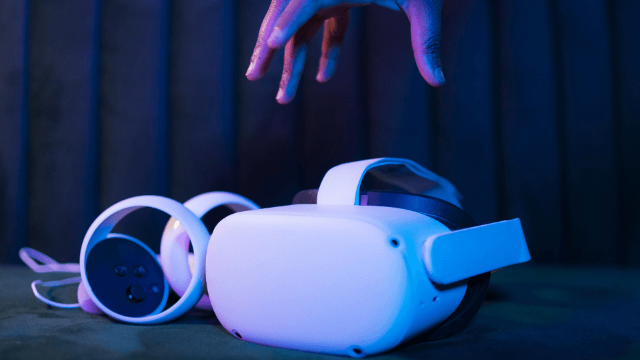
Nov 29, 2023
Designing immersive experiences that seamlessly blend physical and virtual worlds is the holy grail of today's XD theater and simulator rides manufacturers. By far, the most transformative and exhilarating technology to emerge in this realm is Virtual Reality (VR). By integrating VR into dark rides, theme parks have found a novel way to elevate the ride experience to sensational heights. Despite its immense potential and appeal, though, developing such VR dark rides comes with an often neglected challenge—motion sickness. This article explores the complexity of designing VR dark rides to minimize motion sickness and crafting an exciting, enjoyable experience for riders.
The Concept of VR in Dark Rides
Virtual Reality has become a buzzword in the augmented reality game development and VR game development company circles. The technology has been lauded for its capacity to deliver intensely immersive experiences by transporting users into virtually created environments.
Translating the VR concept into amusement parks, particularly dark rides, has been a game-changing move. A typical dark ride entails a guided tour around a 'dark' or indoor environment lit strategically to accentuate specific features and set the atmosphere. With VR, the narrative is digitally reimagined and enriched with virtual elements, creating an unprecedented level of immersion.
The Motion Sickness Dilemma
The convergence of VR and dark rides has been revolutionary indeed. However, some inherent problems are associated with merging a real-time ride’s physical motions in the real world with an entirely virtual setting. The main issue is the concept of “VR motion sickness” or “cyber sickness.”
It is common to be familiar with motion sickness; it is the nauseous feeling one gets when traveling by car, boat, or plane. This results from a confrontation between senses; while the inner ear detects movement, the eyes may be focused on a still object. In VR, a comparable clash exists. The headset projects an illusion of movement yet the body itself may be stationary which leads to conflict in senses that may cause discomfort or illness.
Overcoming the Challenge – The Role of XD Theater Manufacturer and Simulator Rides Manufacturer
XD theater and simulator ride manufacturers are vital in addressing the motion sickness challenge in VR dark rides. The key lies in precisely synchronizing the physical ride system and the VR content.
1. Careful Calibration of Motion and Visuals: By fine-tuning the VR content to match the ride's physical movements faithfully, the discordance between visual input and body sensation can be minimized, reducing the chances of motion sickness.
2. Efficient Ride Systems: XD theater and simulator rides manufacturers need to leverage modern technology for faster, real-time communication between the ride system and the VR content. This seamless integration will ensure the synchronization between physical motions and virtual visuals.
3. Incremental Introduction of VR: Gradual exposure to VR experiences can be helpful to acclimatize riders, especially those new to the technology. Beginning the ride with minimal VR elements and gradually introducing more as the ride progresses can ease the sensory transition and mitigate sickness.
The Role of Augmented Reality Game Development and VR Game Development Companies
In tandem with the hardware adjustments, augmented reality game development and VR game development companies also need to innovate their designs to mitigate motion sickness.
1. Consistent Frame Rates: The quality and consistency of the VR projection significantly influence the likelihood of motion sickness. Developers must maintain a high and consistent frame rate throughout the ride to ensure a smooth, uninterrupted VR experience.
2. Use of Fixed Reference Points: Incorporating fixed reference points within the VR content, like a virtual cockpit or vehicle dashboard, can provide a stationary visual anchor, helping riders maintain spatial orientation and lessen the feeling of motion sickness.
3. User Control: Allowing users some control over the VR environment could also mitigate motion sickness. This could be done through interactive elements within the VR content that require active engagement from the rider.
In conclusion, the advent of VR has indeed redefined the possibilities for dark rides, despite the challenge of motion sickness. It requires a collaborative approach between XD theater manufacturers, simulator rides manufacturers, and VR game development companies, all striving to harmonize the physical and the virtual for a genuinely immersive, enjoyable ride experience.